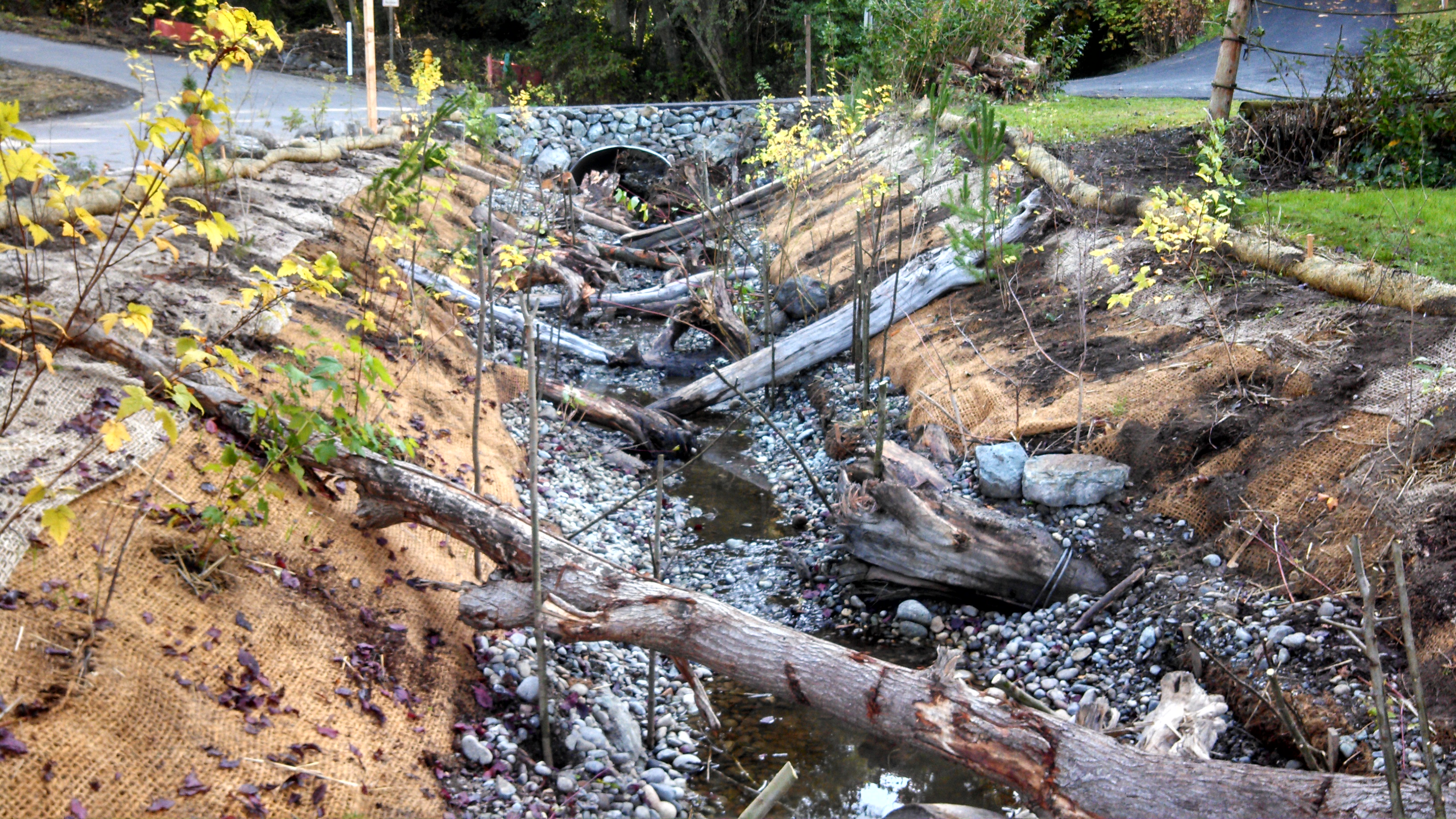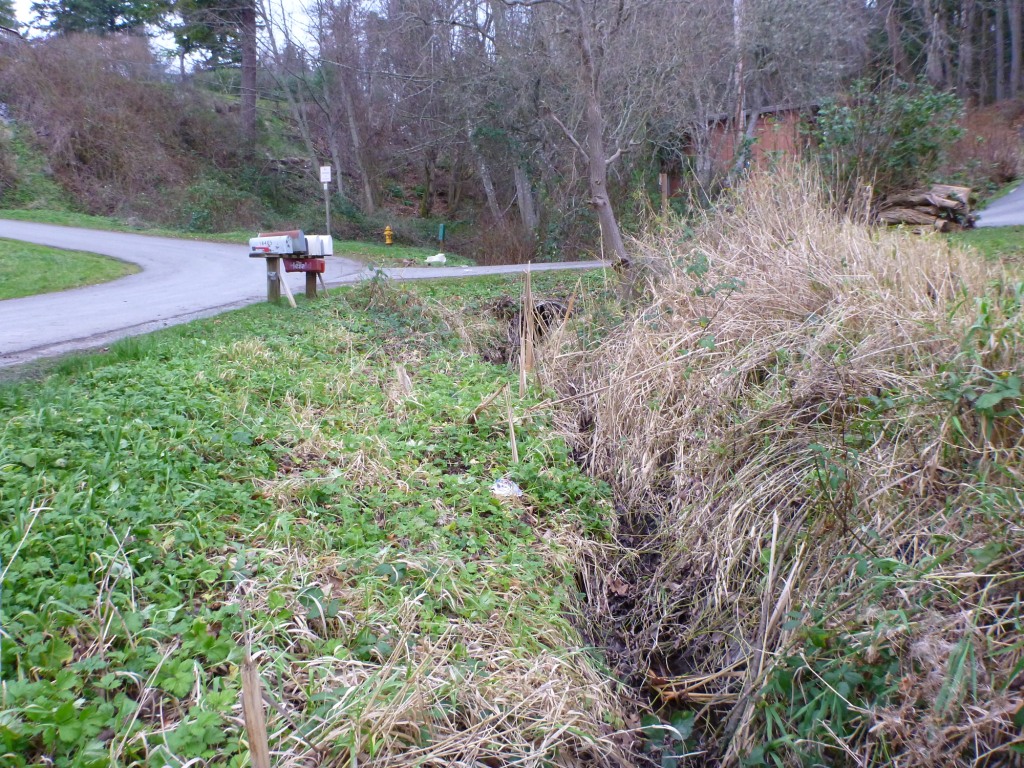
Natural Resources department seeks out important streams that are in need of restoration.
By Monica Brown, Tulalip News Writer
TULALIP, Wa. -In an effort to boost salmon populations and abide by treaty rights, the state of Washington has been court ordered to fix problem culverts, which prevent salmon from accessing integral streams. Tulalip’s Natural Resources department has been helping the State’s effort by repairing one culvert per year for the last few years. Greenwood creek in the Warm Beach community, the most recent culvert repaired by Natural Resources, was found to be an important stream for juvenile salmon and acts as a nursery prior to entering the ocean.
“We try to repair one a year or every other year. It’s something we do when we have time on the side,” said Brett Shattuck of Tulalip’s Natural Resources. Brett works as a forest and fish biologist, a position that doesn’t center on stream restoration. Together as a department though, they research and find vital streams that require repair yet fall out of state jurisdiction which would require the state to repair according to the court order. While the state owns and is responsible for 1,521 culvert barriers, they have been court ordered to only repair just fewer than 1,000 of those within the next 17 years, a feat which the state implies that they do not have enough funds for in order to complete on time.
Brett includes that, “because most streams on the reservation are either naturally non-salmon bearing, or are utilized for hatchery operations and do not have wild salmon access for that reason,” they look beyond the reservation boundaries to find nearby, integral streams in need of repair that would otherwise be ignored. “These streams are really important to fish and a lot of them have degraded,” explained Brett. There are streams that contain salmon on the reservation including Quilceda Creek, Sturgeon Creek and Coho Creek, but these streams already have, or are in the planning stages, of being repaired by Natural Resources.
Greenwood Creek is located in the Port Susan watershed, and as a tidal stream, it is similar to an estuary where salt water tides flow in and mix with the out flowing fresh water. During salmon monitoring of one small portion of Greenwood Creek, it has been recorded to support over 700 salmon in various species. Brett explains, “most of the fish come from the Stillaguamish River and they come in here to avoid predators, to have refuge and to find food.” The stream, mainly utilized for salmon rearing also provides an extra half mile of stream for Silver and Coho spawning.
Many streams located within development areas have degraded environmentally and structurally. Stream area diminishes due to roads, invasive plants change habitat and inaccessible culverts prevent salmon from traveling further upstream. When a stream is developed, a culvert is placed in the stream to modify it so that it can be crossed over. As per Washington Department of Transportation’s data, many streams statewide are important to salmon spawning and rearing but overtime have become inhospitable; 1,960 out the 3,200 culverts statewide have been identified as fish barriers.
The Natural Resources department has restored this and previous streams through grant funding. The $50,000 in grant funding was obtained from Pacific Coastal Salmon Recovery Fund (PCSRF) to replace the preexisting culvert with one that is more functional and to excavate in order to restore 250ft of the stream. While Snohomish County did not provide funds they did provide in-kind services and materials to the project which match the grant fund in cost from PCSRF.

